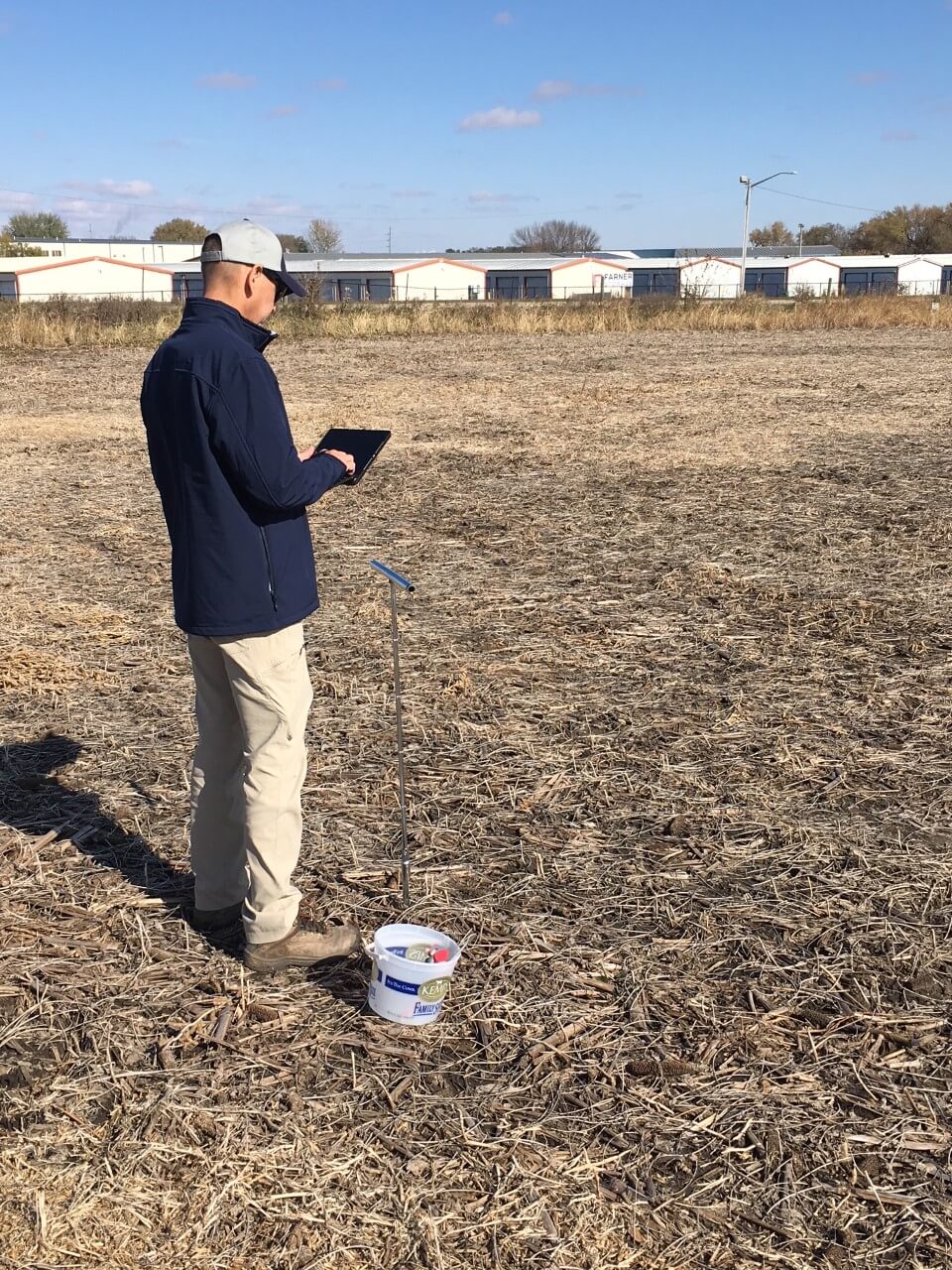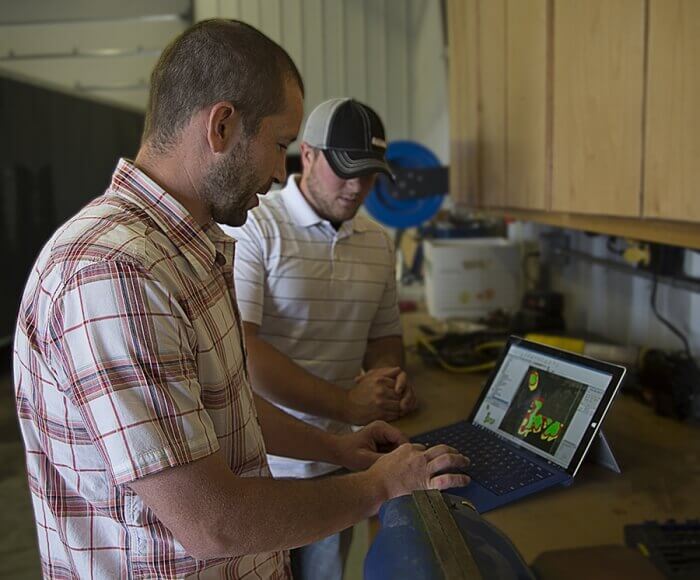Agronomically Speaking: Fall Fertility – From Soil Test to Prescriptions
Farmers understand that soil fertility is a key component of growing healthy and high yielding crops. While there is much debate on how we accomplish soil fertility and health, there are some general items that are helpful to remember.
However, because it was an extremely wet year for many across the country it is even more important to soil test this year. Some of the nutrients found in soil such as nitrogen, potassium, and sulfur are mobile nutrients. Depending on the texture of your soil, these nutrients can be depleted during excessive rainfall. A good rule of thumb for wet soils is that if it’s too wet to till, then it’s too wet to sample.
This year please pay particular attention to the nutrient status of your soil. If you have questions, contact your local agronomist, crop consultant, or trusted advisor for specific questions relating your farming operation.

Soil Test and Yield Map
a. Soil Testing with a management zone or grid approach is a great way to start seeing the variability in your fields and build a plan for the future.
b. Yield maps can help establish management zones to guide soil testing efforts. Yield also helps us see variability not only in space but also through time as each year’s weather and management has a different impact.
c. Yield maps are invaluable when trying to determine what limiting factors are capping yield potential.
Understand the basics of how a recommendation is built
a. There are a variety of methods to analyze soil. Having a basic knowledge of the method a particular lab uses to analyze the soil is important should you try to do any comparative studies from past or future tests, or from another lab.
b. You will quickly see there are many scientific opinions regarding fertility. Try not to get overwhelmed, rather focus on learning principles.
c. Some soil test reports will go into more detail than others. Familiarize yourself with reports from your local lab. Many farmers only look at the recommendation and not the actual test itself, which is not recommended.
d. Remember that fertility equations can involve many variables: crop, yield goal, previous crop removal, pH, etc.
Work with a trusted advisor to build a plan
a. A good recommendation is built using reliable information (Soil Test and/or Yield Maps), crop knowledge, economics, and is farmer-tailored.
b. A good recommendation is…. Wait for it… SIMPLE. Fertility is like investing money. We don’t invest money in financial products that we don’t understand. Our fertility programs should be the same way.
c. Review the 4Rs of Nutrient Stewardship
-
- Right fertilizer source at the
- Right rate, at the
- Right time and in the
- Right Place

Implement your plan
a. Think through how your plan will work. Will I hire someone to spread lime and fertilizer or will I do it myself? What do I need to effectively record and control the operation of one of my most costly crop inputs?
b. If I hire someone else to apply fertilizer or lime, how can I gain access to the information to be sure the job is done correctly? Can their machine accept the prescription file formats I will be using? What other parties need access to this information and how will I share it?
c. Remember that Ag Leader has you covered with our unlimited use, affordable prescription service based on recommendations from trusted land-grant universities and more. Learn more here.
















